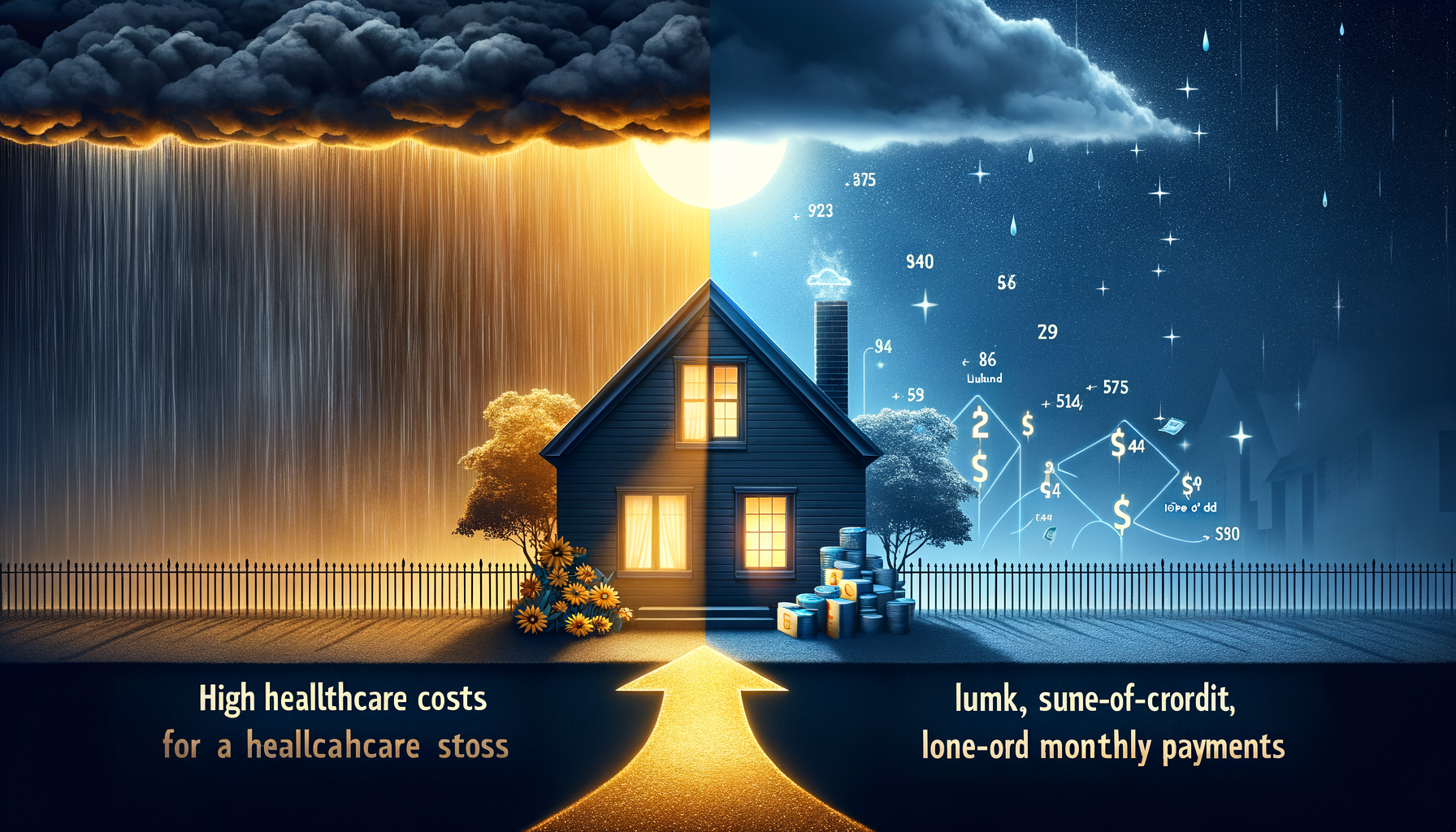“Exploring Reverse Mortgages as a Potential Solution for Long-Term Care Needs”

Utilizing Reverse Mortgages as a Viable Tool for Long-Term Care Planning
The exponential costs associated with healthcare – particularly long-term care needs, can often put many American seniors in a financially straining situation. To combat this issue, people have often sought financial relief in various forms such as relying on their savings, opting for long-term care insurance, or counting on government programs like Medicaid. However, there’s an alternative financial solution that’s been under-explored yet incredibly potential, namely, reverse mortgages.
Understanding Reverse Mortgages
A reverse mortgage, also known as a Home Equity Conversion Mortgage (HECM), is a financial tool that allows homeowners aged 62 or older to draw on the equity of their homes. The distinct advantage of a reverse mortgage over a traditional one is that the borrower isn’t required to make monthly principal or interest payments. The loan and accumulative interest are repaid when the homeowner sells the house, permanently moves out, or upon the homeowner’s death.
In essence, reverse mortgages allow elderly homeowners to convert a portion of their home equity into a steady stream of income or a lump sum, without the need to downsize or sell off their property. This financial strategy could be particularly beneficial for seniors grappling with spiraling healthcare expenses.
Reverse Mortgages and Long-Term Care: A Novel Connection
The potential of incorporating reverse mortgages into long-term care plans is gradually gaining momentum. They have the potential to solve the financing issue worrying many seniors when it comes to covering their long-term care expenses. In many cases, the equity locked in an individual’s home is likely their most significant asset. Hence, a reverse mortgage provides a sustainable solution to utilize this asset effectively.
Reverse mortgages can be tapped in several ways; some seniors may choose a lump-sum payment or a monthly payment, while others might prefer a line of credit they can draw on as needed. Interestingly, a reverse mortgage line of credit has a unique growth feature. The unused portion of the line of credit grows and compounds over time, regardless of the home’s value, essentially providing more funds for borrowers to access in the future.
While the connection between reverse mortgages and long-term care may seem fairly recent, experts have been shedding light on this possibility for quite some time. One of the earliest pieces of advice regarding the use of reverse mortgages as long-term care instruments came back in 2014, when the Bipartisan Policy Center, a Washington D.C. based Think-Tank, acknowledged reverse mortgages as an integral part of retirement planning and long-term care.
Significantly, in 2017, The National Council on Aging (NCA), in collaboration with a leading financial institution, commissioned a survey of more than 1,000 homeowners aged 60 and over and found that 13% of people in this age group were indeed contemplating a reverse mortgage.
Analyzing the Feasibility
Though promising, using reverse mortgages for long-term care isn’t without its challenges. They may not be a feasible choice for everyone, with the decision swinging on the homeowner’s individual financial circumstances, health conditions, and personal objectives.
One significant determining factor is the amount of equity in the home. The higher the equity, the more proceeds the owner can potentially access through a reverse mortgage. Another consideration is the age of the borrower. The older the homeowner, the higher the amount that can be borrowed. Remember the loan amount is also subject to current interest rates and the Federal Housing Administration’s lending limits.
Additionally, reverse mortgages can be a complex product with potential consequences. Borrowers must comprehend the implications, charges, and fees associated with reverse mortgages before proceeding. Furthermore, it’s crucial that they understand the necessity to continue paying for home insurance, property taxes, and basic maintenance, even after securing the reverse mortgage. Failing to meet these obligations may result in foreclosure.
Exploring the Pros and Cons
Like any financial product, reverse mortgages come with their own set of benefits and drawbacks, particularly when considered as a long-term care funding option.
Pros:
Financial Freedom: Reverse mortgages offer individuals a level of financial security, especially when used to supplement existing income sources.
Asset Retention: With a reverse mortgage, the homeowner can stay in their home for as long as they wish, while accessing the equity.
Flexibility: It provides a customizable financial solution depending on the homeowner’s needs. You can choose a lump sum, monthly payments, or a line of credit.
Cons:
Complexity: Reverse mortgages can be challenging to understand due to their unique structure and rules.
Expense: They tend to be more expensive than traditional mortgages and come with various fees and interest.
Impact on Heirs: Since a reverse mortgage needs to be paid off when the borrower dies or sells the house, it could decrease the equity left for the heirs.
Making The Decision
Ultimately, the decision to use a reverse mortgage for long-term care is deeply personal and depends on several factors. It’s best approached with a carefully laid out plan and understanding of the financial implications it entails. To ensure the right decision is made, it is advisable to discuss the prospect with qualified financial advisors, elder law attorneys, or reverse mortgage counselors who can delineate the advantages and disadvantages in relation to personal circumstances.
In conclusion, while reverse mortgages may not be the answer to every senior’s long-term care funding dilemma, they do provide a viable alternative to consider. By carefully evaluating the pros and cons, seniors can leverage the potential of their homes to help secure their futures and improve their quality of life in their golden years.
